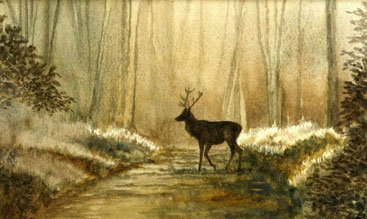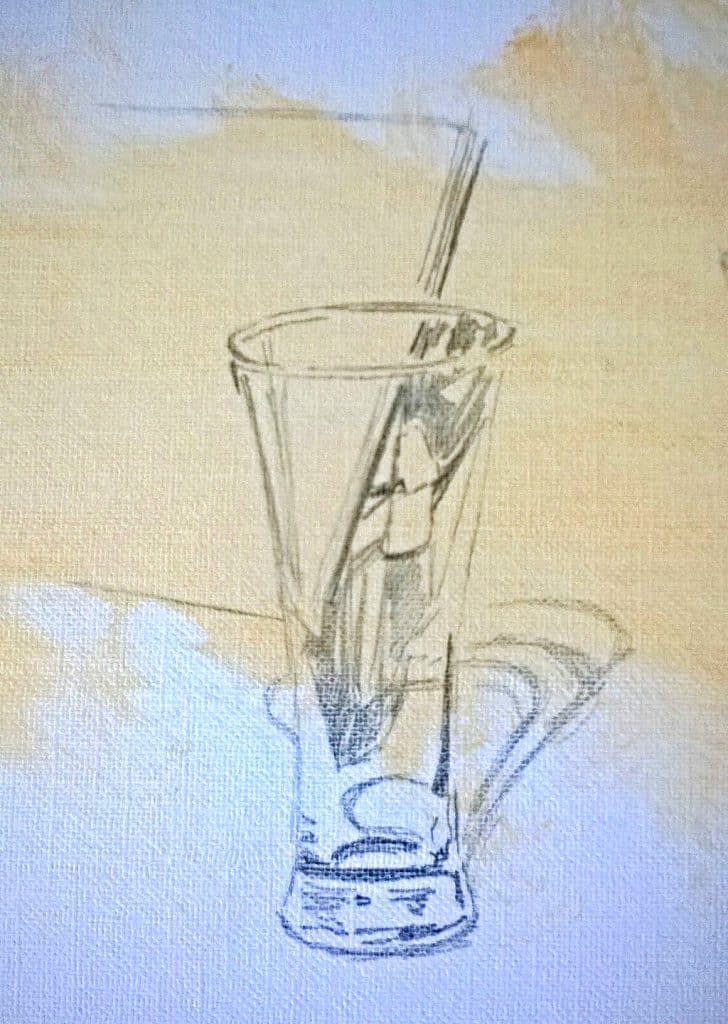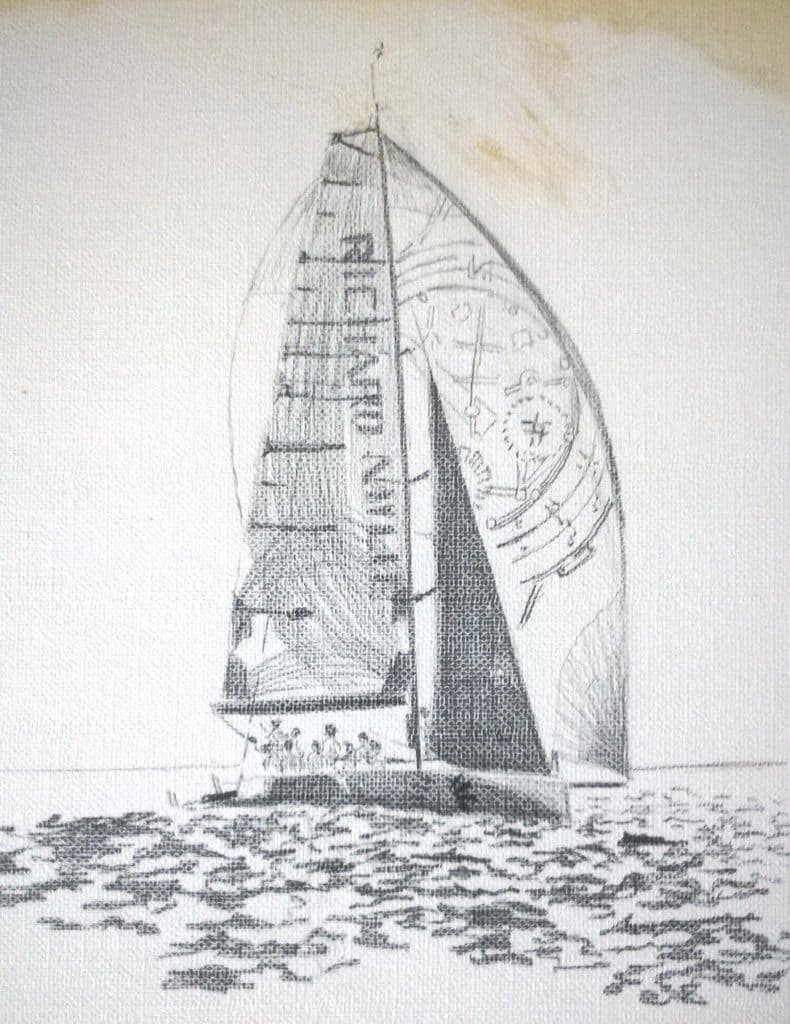Last night I had arranged to give my daughter’s best friend some tuition. She’s crazy-keen on art and had been given some acrylic paints but didn’t really know what to do with them. I work in oils and watercolours. I have some acrylics but they remain unused in a drawer at the moment. I hoped this wasn’t going to be an issue…
I hadn’t really planned the informal lesson and we kind of just winged it. There’s so much to put across from having done this for most of my life (even if the majority of it hasn’t been full-time) that it is difficult for me to know where to start.
Anyway, start we did and we covered quite a lot of ground for a first hour. I remembered some of what my art college tutors had said to me, some of these learnings have stuck with me for years, many years. And in so doing, we started to make sense of the sometimes confusing world of drawing & painting and it made me reflect upon the reasons why so many people drop out of having an interest during their school years.
These are some general thoughts for anyone wanting to enjoy their drawing or painting more; to get away from the negativity they may have heard from teachers or peers when they last tried it at school.
Drawing 2:1
I remember an art tutor at college telling us to spend at least twice as long looking at the subject matter than actually drawing it. We tend to start observing but after a short time you’ll see the students’ heads stay down, looking at the page more than the subject they are drawing and this is where mistakes come in. You have to keep referencing your subject matter to ensure your lines, shading, whatever, are correct and so you can make corrections before it’s too late and so many other areas of your picture have relied themselves on an incorrect angle or line or something because you stopped LOOKING!
So, spend 2 x as much time looking at your subject to 1 x the actual drawing time. Or even better, work towards a 3 : 1 ratio
Observe and simplify what you see. Less is more
This follows on from the first point. The more you observe your subject matter, the more familiar it is in your mind and the more you can work out what is important for you to put across on the paper. Let what you see NOW transfer onto the page rather than your memory of what you’ve seen in the past dictate the direction of your pencil.
Half-close your eyes to find accentuated tonal differences
This squinting that you see many artists do isn’t because they forgot their glasses, it’s because they want to accentuate the differences on the subject matter they are viewing of light and dark. This will make their sketch or drawing more defined and therefore more real.
Keep your pencil sharp
You’ve got to keep sharpening your pencil. Especially soft ones from B or 2B onwards, they are so soft that a sharp point disappears very quickly. Learn how to safely use a Stanley knife so you can sculpt the pencil to the way you like it.Buy a putty rubber and keep it warm in your hands so it works better I can’t say much more than that. Rubber erasers can smudge and you have lots of debris left on the paper to blow or sweep away and that can also smudge away detail from your drawing.
Doodle
Sometimes just play and don’t think about it. You never know what sort of creative brilliance or idea that it might bring about. It’s a bit like lying on your back and looking up to the sky and making things out in the clouds.
Draw what interests you
It’s simple but if you draw something that interests you it will hold your attention and focus for longer. You’ll also find you are more likely to understand it better so you will see any errors earlier on, too.
Sketch your family, your dog, anything
They are your free models. If they’re reading, watching TV or sleeping then they’ll likely be staying still and not even notice you so won’t become self-conscious…or charge you for their time!
Draw what YOU see, how YOU see it, not how anyone else sees it. If you want to be abstract, be abstract.
We are all individuals and see the world through our own eyes (another great tip given to me by a fantastic artist). Be confident to portray the world you exist in, the way you see it.
But remember that draughtsmanship is important
Understanding how to break down what you see into shapes is very useful, it makes it easier and less daunting. So start with simple things to draw and build up from there.
Take a line for a walk
This is a great exercise. Draw something that is in front of you but don’t take your eye off it. Don’t look at the drawing at all; don’t take the pencil off the paper. See what happens, practice. It really is very good for hand-eye coordination.
Painting
Work in one colour first.
Get the shapes and tone right. Colour comes later. It’s important to understand tone and how to make the paint work for you.
Keep your brush clean
If you’re working in watercolour, have one jar of clean water and one jar for washing out paint from the brush. This also applies to acrylic if working with water but if working it like oil paint then have turps or white spirit nearby to clean your brush. Acrylic paint dries very quickly so it’s important to do this almost immediately. for both these latter two mediums it is best to use one brush per colour to avoid mixing.
Use the biggest brush you can
This allows you to loosen up and gain more dexterity with the nuances of different types of brush and stops you getting too tight with your work (something I’m still working on….!)

This painting was created using just two colours (the ones mentioned below) and they fight to separate themselves from one another, making this exercise very tricky
Practice mixing colours
to see how some want to un-mix themselves (Burnt Umber and French Ultramarine). Use some of your drawing/painting pad to see how different mixes work.
Never use black
Black paint is dead and flat. It can kill the life and movement in a painting. It is also very artificial and there isn’t really any true black that occurs in nature. Always create a ‘black’ from blue and brown. More brown warms the ‘very dark colour’ and brings it forward in a picture and more blue will cool it, sending it further back in a picture.
And whilst I’m about it, if you’re using watercolour or acrylics (mixed with water) then do NOT add white to lighten the colours. Just use MORE water. They are translucent mediums so the white from the underlying paper will be the light that you need to utilise.
White paint can be used for highlights (like light reflected in the eyes, for example) or as reflections of sun glistening on water.
Try working on small areas using watered down paint on dry paper, wet paper, and damp paper
Try different amounts of water mixed with paint
Explore the shapes and specific qualities and limitations of each type of brush
How quickly does the paint dry in a warm room, a cold room, outside…?
Enjoy the process
and practice, practice, practice
Don’t expect to create a masterpiece at every sitting. Chill out and take some time to just doodle with your paints and see how you learn subconsciously. If it becomes a task or with too high a requirement or desire to achieve a specific outcome it is likely to be less enjoyable and you may soon find yourself back to where you started from, at school, not thinking you’re any good at art!
Above all, do not compare what you produce to anyone else. Everyone who is drawing or painting is on their own path. You don’t know how far down their path they are or where they are going on their own path. It is so easy to become discouraged and I believe that this is a fundamental reason why so many people stop and give up. I am always hearing ‘I’m no good at art’, or ‘I can’t draw, I’m rubbish at it.’ Who told them that and when? Most likely when they were still at school.
And here’s my rant…
No schools provide adequate teaching of art. It is an afterthought for the most part. Something that HAS to be included on the curriculum but is not necessarily well-funded as it detracts financially and time wise from the ‘key’ subjects and STEM. Is this right? Of course not! It’s the “Everybody is a genius. But if you judge a fish by its ability to climb a tree, it will live its whole life believing that it is stupid” scenario. And that is the basis of our school system. Essentially trying to create worker bees of a particular type for the colony. Well, that’s my thinking, especially now that I have my own daughter and one that has her own learning issues with dyslexia. The ‘system’ (and our schools) don’t really cater for anything other than what ‘they’ deem the ‘norm’ or what they perhaps desire as a raw material to manipulate into something that can conform to their rules better.
I don’t want anyone to be part of a machine. I want to see individuality, creativity. It is only from these traits that great things are realised; whether they be iPhones, space ships, fashions or art.
Be a butterfly not a sheep!
(Although I love bees – I used to be a beekeeper – who knew?!)
You have to remain true to yourself and remain individual. Whatever you choose to be, be the best at it, whether it be maths, sport, music, drama, art. Go for it 100% if that is what you love the most and don’t let others or circumstances get in the way of doing what you love most.
Ian Holtedahl-Finlay
“I have always had a passion for visual arts, be it photography, film, theatre or, as you may have guessed, painting and sketching. This passion has moulded me in many ways but so have my other interests. I have been an active racing sailor since childhood and have competed globally in yacht regattas in some of the most competitive classes and events. Aside from sailing I also enjoy fly-fishing, photography, skiing, shooting (when and if time allows for any of them) but most of all I love being with my family who are the centre of my being. They are loving, supportive and I know that I am incredibly privileged to have them in my life” ~ Ian Holtedahl-Finlay http://ianguyfinlay.wixsite.com/artofsailing

